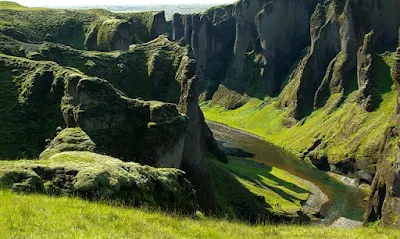Fault – Endogenous Force
Fault – Endogenous Force
The relief of our earth is full of variations and contrasts. Due to fault-endogenous force on the upper surface of the earth, some fault valley, ramp valley have been formed. Somewhere there are deep trenches, and somewhere there is sea. In some places there are snow-filled glaciers and mountain ranges, where there is no trace of vegetation, then there are also marshy places, which are full of oddities and mysteries. Have we ever thought, what is the reason for all these differences? The answer is –
Internal Structure Of The Earth
Mainly two types of forces work on the earth, which are as follows –
- Endogenous forces – By these, disparities are created on the earth. Like – Earthquake, Tsunami, Long term force etc.
- Exogenous Forces – These are the plane stabilizing forces of the earth. Like – flowing water, sea water, glacier, wind etc.
1. Endogenous Force
As we said above, inequalities are created on the earth by endogenic forces. Endogenous i.e. the creation of disparities on the earth by the force generated from inside the earth. Earthquakes, tsunamis, volcanoes etc. come under this.
Endogenous force can be divided into two parts, which are as follows –
- Sudden force : Example – earthquakes, tsunamis , volcanoes .
- Long-term force or Plate deformation force
- Vertical Movement - Continent Builder
- Upward – In this the land rises upwards. Like – 24 km 0 land near the Gulf of Kutch has risen several km 0, which is also called Allah's Dam.
- Downward – In this, the land is sunk towards the bottom. For example – Submerged forests of Prince Dak area of Mumbai.
- Horizontal Movement – Mountain Builder
- Compression Force – In this, the layers of rocks are folded, that is, folds occur in the layers of rocks.
- Tension Force – In this, there is a change in the land between two cracks, that is, due to the tension force, fault action takes place.
Fault
Due to the endogenic force of the earth, mainly the horizontal movement force, cracks are produced in the rocks of the earth's crust, which are called fractures. Such fractures in which the rocks are broken and moved along a plane are called faults. Escarpments are formed due to faults. Hanging valleys and waterfalls are formed in such areas. Like – Western Ghats ledge, Vindhyan ledge.
It is of two types.
- Common Fault
- Reverse Fault or Thrust Fault
1. Common Fault
2. Reverse Fault or Thrust Fault
a. Step Fault
When there are many faults parallel to each other in an area and the slope of all fault planes are in the same direction, it is called a step fault. Like – Rhine Valley of Europe.
b. Transcurrent Fault
Topography Caused By Faults
1. Rift Valley
What is living classification? a brief introduction





Comments
Post a Comment